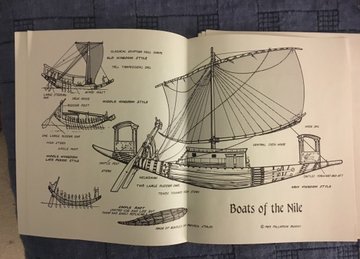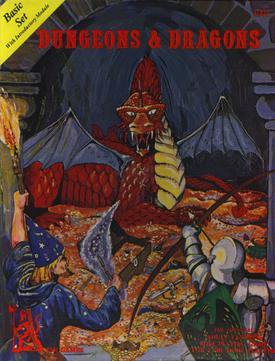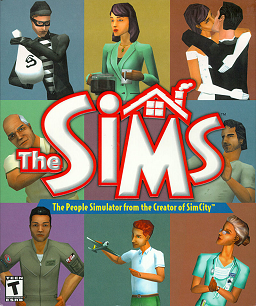Almost caught up on my old school Dungeons & Dragons posts from twitter! So here’s part 7!
UK4: When a Star Falls (1984), by Graeme Morris. We start today with another of the UK-produced modules, which tend to have a very different flavor and welcome quirkiness when compared to their US counterparts.
The fact that this module is written by Graeme Morris is a good sign: Morris was an author or co-author of many excellent modules from the TSR UK office, including Beyond the Crystal Cave, which I’ve written about before!
I mostly neglected the TSR UK modules when I was younger, so I’ve been excited to go back and see how clever they are in many aspects, including their graphic design, organization, and layout.
The module features the recovery of a fallen “star,” i.e. meteorite, making it perhaps the first adventure to feature some actual celestial bodies! The PCs are tasked with recovering the star for a sage in order to fulfill a prophecy.
It isn’t a simple recovery quest, however, and the PCs must travel through a number of tricky wilderness encounters in order to get the star and return it safely. They must also deal with treachery among the sage’s peers along the way.
The encounters are quite clever. One in particular requires the PCs to have cool heads to avoid tragedy. They pass through the territory of a group of non-hostile but paranoid hunters, fearful of outsiders. A couple of misunderstandings could lead to needless bloodshed. Several of the encounters have this “keep a cool head to avoid a bloodbath” theme, which was pretty rare in D&D adventures at that time, and a nice change of pace.
Even after claiming and bringing the star to the sage, the adventure continues: the PCs must now bring it to a particular location to fulfil the prophecy. They find more unpleasantness along the way, including magical mechanical tanks created by evil gnomes.
The other new monster is also quite fun: a memory web, which drains the memories of its victims but spits them out when it is killed. The adventure starts when the PCs defeat a memory web that killed the previous star questers, giving them instant info on the mission!
Overall, When a Star Falls is a solid, unusual adventure. But in hindsight, I was wondering why I didn’t pick up more of the UK modules? Here’s my theory: let’s compare titles of original US modules and UK modules…
US titles:
- Tomb of Horrors
- Ghost Tower of Inverness
- Hidden Shrine of Tamoachan
- Keep on the Borderlands
UK titles:
- When a Star Falls
- All That Glitters…
- Dark Clouds Gather
See the difference? The US titles were often focused on sinister places – ruins and dungeons – while the UK titles focused on story concepts, often fairy tale-like. I guess teenage me didn’t find those appealing? A shame!
Valley of the Pharaohs (1983), by Matthew Balent. Next, let’s step away from D&D and look at another early fantasy RPG of a very different nature, set in ancient Egypt.
I came across this game because I’m a big fan of ancient Egypt (and have studied a bit of Middle Egyptian), and started to wonder if there were any games dedicated to an Egyptian fantasy setting.
 Valley of the Pharaohs shows that I wasn’t the only person interested in such a setting. The game was released by Palladium Books, a few years before they made their Megaversal system of rules that they adopted for all of their games.
Valley of the Pharaohs shows that I wasn’t the only person interested in such a setting. The game was released by Palladium Books, a few years before they made their Megaversal system of rules that they adopted for all of their games.
There haven’t been that many Egypt-themed games, and most of the time Egypt has appeared as a secondary setting in a larger game world, such as the Kingdom of Nithia for D&D, released in the 1990s, and GURPS Egypt, released in 1998.
I’m guessing that Egypt has been a rare setting largely because folks aren’t that familiar with the culture, outside of mummies pyramids and hieroglyphics, where they feel like they understand (or think they do) medieval European culture. Clearly, that concern was on Matthew Balent’s mind as well, as the game comes with quite a few loose-leaf illustrations to give players a visual feel for life in ancient Egypt!
The rulebook itself includes more details, such as the clothing and hairstyles of men and women.
But what of the game rules? First, let me point out the cute nod to ancient Egyptian gaming in the introduction, which includes an illustration of their game known as Senet.
Character options are initially limited by caste, which can be rolled for randomly (but if I were to run, I would let people choose).
Then there are five occupations, restricted by caste. It is quite amusing to me that one can be a scholar or merchant!
The game attempts to give a realistic feel of ancient Egyptian life, but clearly the author felt that this wouldn’t be enough for most players, especially with ancient Egypt’s rich magical myths and legends. So spell casting is available for some classes.
The spells are rather subtle, and deliberately so, I believe. Fireballs don’t go well with ancient Egypt! But other magical items, based on actual history, are available, such as amulets.
And this is my favorite: one can get magical ushabti figures, which will animate and do certain labors for you. This is based on the actual burial practice of including figures with the deceased to perform chores in the afterlife.
Even fantasy monsters are available, some simple, like giant serpents, and some quite bizarre! The monsters are simply labeled “Type I,” “Type II,” etc., a missed opportunity to invent authentic Egyptian names for them!
Such monsters are intended to be rare, though, unlike in D&D. Also, the game explicitly notes that adventures will have a very different feel to them. Ancient Egypt was very civilized and orderly, in contrast to the untamed wilds of D&D type settings. Speaking of orderly, the game comes with a large map of Egypt, which includes a Nile flood table! (Flooding was key to agriculture in ancient Egypt.)
Oh, and before I forget, I should note that the Egyptian gods are given a section of explanation! It couldn’t be a game about ancient Egypt without their wild and weird pantheon!
I’m really intrigued to try and run a campaign of this, just for kicks! It can be purchased in pdf form on DriveThruRPG, for anyone who wants to give it a try!
C2: The Ghost Tower of Inverness (1980), by Allen Hammack. Let’s return to classic TSR-produced D&D modules! The Ghost Tower is considered one of the greatest modules of all time, and just made spot 30 in Dungeon Magazine’s top 30.
This was the second in TSR’s “competition” series of modules, actually written for competitive convention play, with a scoring system and special rules. As the cover notes, it was first used in 1979 at Wintercon VIII in Detroit!
The module is straightforward, at least in its objective: visit the ruined fortress of Inverness, and hunt for the fabled and powerful Soul Gem that is still rumored to rest there, a tool of the late famed wizard Galap-Dreidel. Galap-Dreidel? Jewish players must have rolled their eyes a little at that name, though as we will note it was likely more intentional than you might think.
When the PCs arrive, the tower is, in fact, long gone. There is a dungeon beneath the ruins, however, and the characters must collect 4 segments of a key to the central chamber, facing puzzles, traps and monsters along the way. When they use the key, they are transported back in time, to an ancient era when the tower existed – they explore the “ghost” of the tower, so to speak! They must then work up to the top level, where the gem awaits.
Here is where you might notice the connection to dreidels! As my friend Gwen Katz pointed out on twitter, there is a striking similarity to the dungeon and an upside-down dreidel!
The lowest four levels are themed by the classic elements: air, earth, fire and water. I always have loved this back cover image that shows how scary a fire giant can look.
You may notice that the water level is upside-down! Thanks to a powerful anti-gravity spell, things fall upward through the hole from the fire level. Armored characters charging the fire giant may get a nasty surprise, tumbling upwards to a death by drowning in water.
At the top, the PCs must face the gem itself, which is randomly attempting to grab any soul within reach. The players will have to move fast to take the gem before all of them are trapped in the Soul Gem. One nice touch: the gem itself can be broken. If the PCs do so, they release a million trapped souls within, who proceed to kill every living creature in the tower! This may be what the cover image of the module is illustrating.
Ghost Tower is one of the earliest D&D modules I remember playing. My friend Kevin, who moved away in 5th grade, DMed it for me. My imaginatively-named characters Conan and Tron fought the dangers of the Tower! Somewhere, I still have their original character sheets.
B1: In Search of the Unknown (1979), Mike Carr. After writing about the Ghost Tower on twitter, I set off on my long trip to China, which you can read about in other blog posts. When I got back, I decided to get back to basics: really basic, in fact!
This copy of ISotU is my original copy, probably purchased around 1981 or 1982. I still remember the shop I bought it: Hobby Hutch, which was a bike ride from my home! You can see the tape I used to hold the cover together.
B1 was the *original* introductory adventure, included in the original Dungeons & Dragons Basic Set when it was updated in 1978. This lasted for the fourth and fifth printing, before it was replaced with The Keep on the Borderlands.
By 1978, in fact, D&D was so popular that there was a dice shortage! The set with B1 included paper chits because dice were not available. You cut them up and put them in a bag to draw!

Image from WarGameDork.
Module B1 itself went through changes, a good indication of the newness of the whole field of roleplaying — everyone was figuring things out as they went! The original printing set the module in Greyhawk, in Ratik, Tenh, or the Pale. It was later changed to “generic.”
B1 is also unique, in that it didn’t include fully detailed rooms! It had a list of monsters and treasures, and the DM had to fill in the specifics as desired. (Here you can see an example, with my old scribbles included.)
I don’t think any other module ever replicated this style? Clearly TSR was still figuring out what people wanted and needed in new products. They quickly learned that players were most interested in complete adventures.
The module also contained lots of introductory explanation about how to be a Dungeon Master and how to run the adventure! Today, there’s a wealth of information and players, but back in the day, this was really necessary.
And the adventure itself? Pretty much the purest of dungeon crawls. Years ago, two wealthy adventurers, Roghan the Fearless and Zelligar the Unknown, built a keep and began work on an underground complex, the Caverns of Quasqueton. But the Caverns went unfinished as Zelligar and Roghan built and army and went on an expedition, where they vanished. Now their home has been abandoned for years, and is rumored to be filled with treasure. The PCs are drawn there to hunt for it…
The dungeon has two levels, the keep and the caverns. There is no final encounter, or quest to accomplish — the PCs just go in, grab as much loot as they can, and get out! Like I said: pure.
B1 has continued to survive and thrive! It was included in a D&D 10th Anniversary Collectors Set that appeared in 1985 but was only available at GenCon 17.
B1 also made an abridged appearance in the 1987 compilation, In Search of Adventure. Curiously, though, even though the module is labeled B1-B9, it only included the maps from B1, and no details at all.
Most recently, B1 was included in Goodman Games’ “reincarnation” of classic adventures for 5th edition D&D. It appears in Into the Borderlands along with an update of Keep on the Borderlands!
Clockwork Mage (1985), written by Susan Stone and M.E. Allen. Time to veer back away from TSR and look at an unusual adventure by a 3rd party publisher, and Clockwork Mage is very unusual!
For those who haven’t been following these threads: Role Aids was an offshoot of Mayfair Games created in 1982 to provide supplements for Advanced Dungeons & Dragons. They were unable to get licensing from TSR, even though Gary Gygax wanted to approve it (he was outvoted). So they carefully included text on the covers making it clear who owned the AD&D copyright.
At their best, Role Aids products were often better than adventures released by TSR! … which is probably why TSR sued Mayfair in 1993 for trademark violation. TSR only partly won, allowing Role Aids to continue, until they outright bought them.
So… what is Clockwork Mage about? Hearing that something has apparently gone wrong at the home of the eccentric wizard Humbert, the PCs head to his mansion to investigate.
There, they get drawn into a long-running rivalry between two wizards, Humbert and Kasin, a rivalry that involved playing increasingly elaborate magical practical jokes on each other…
Before the PCs get involved, Humbert finally went too far, stealing two powerful magical items from Kasin. In retaliation, Kasin imprisoned Humbert in a miniature mechanical clockwork carnival in his home. Kasin now spends her time trying to break his wards on her items.
When the PCs arrive, they get drawn into the wizards’ war. Kasin wants their help to get her magic back, and Humbert’s servants want their help to free their master. The players must navigate both the politics of the groups as well as magical traps and puzzles in the house.
The term “Clockwork Mage” doesn’t refer to Humbert’s prison, in fact! It refers to his magical mechanical servants, called “Sims,” that run the household and defend it with lethal force, if necessary.
What makes the adventure truly unique, however, are the practical jokes. Humbert is a big fan of tricks, and his magical mechanical home is filled with pranks both embarrassing and lethal. One example of a room is listed below.
By the way, the name “Sims” is probably familiar to readers in a different context! Clockwork Mage used the name first, in 1985, beating the video game by 15 years.
The house itself has a control room where other random tricks and traps can be activated at various levels of intensity. This can be an unpleasant surprise for the players, as things get unexpectedly more treacherous in the middle of the mission!
The politics of the various factions comes into play here. In order to learn how to free Humbert, the players must help Kasin, first. But none of them realize that one of her items magically lost power while stolen. When she finds out, she becomes enraged and sets the traps to “11”, so to speak. The politics to me seems like the most challenging part of running the adventure: one has to keep track of where the different NPCs are, and what they are doing, while leading the players through the mansion!
BTW, the cover art clearly has little to do with the adventure — though Kasin is a woman wizard who does in fact have a dragon! This was a regular problem with Role Aids, which licensed existing fantasy art for covers. My favorite? The warrior wearing BLUE JEANS.
It turns out, as pointed out by my twitter friend Jim Bush, that this artwork was probably originally done for Roger Zelazny’s Chronicles of Amber books, and Boris Vallejo‘s rendition actually makes sense for that series.
Clockwork Mage is another example of a very quirky, unconventional adventure! If the PCs free Humbert, he’s not even mad at Kasin! He considers his lengthy imprisonment the best joke yet.
PS Clockwork Mage also is noteworthy for its isometric map! In that era, isometric maps were still pretty rare, with Ravenloft (1983) and Dragons of Despair (1984) being notable examples.
Okay, that’s a wrap for this edition of old school Dungeons & Dragons! More to come!

























































“The PCs are tasked with recovering the [fallen] star for a sage in order to fulfill a prophecy.
It isn’t a simple recovery quest, however, and the PCs must travel through a number of tricky wilderness encounters in order to get the star and return it safely.”
I hadn’t heard of this module before, but that’s pretty damn close to how my own homebrew campaign started a few years ago.
Reblogged this on DDOCentral.